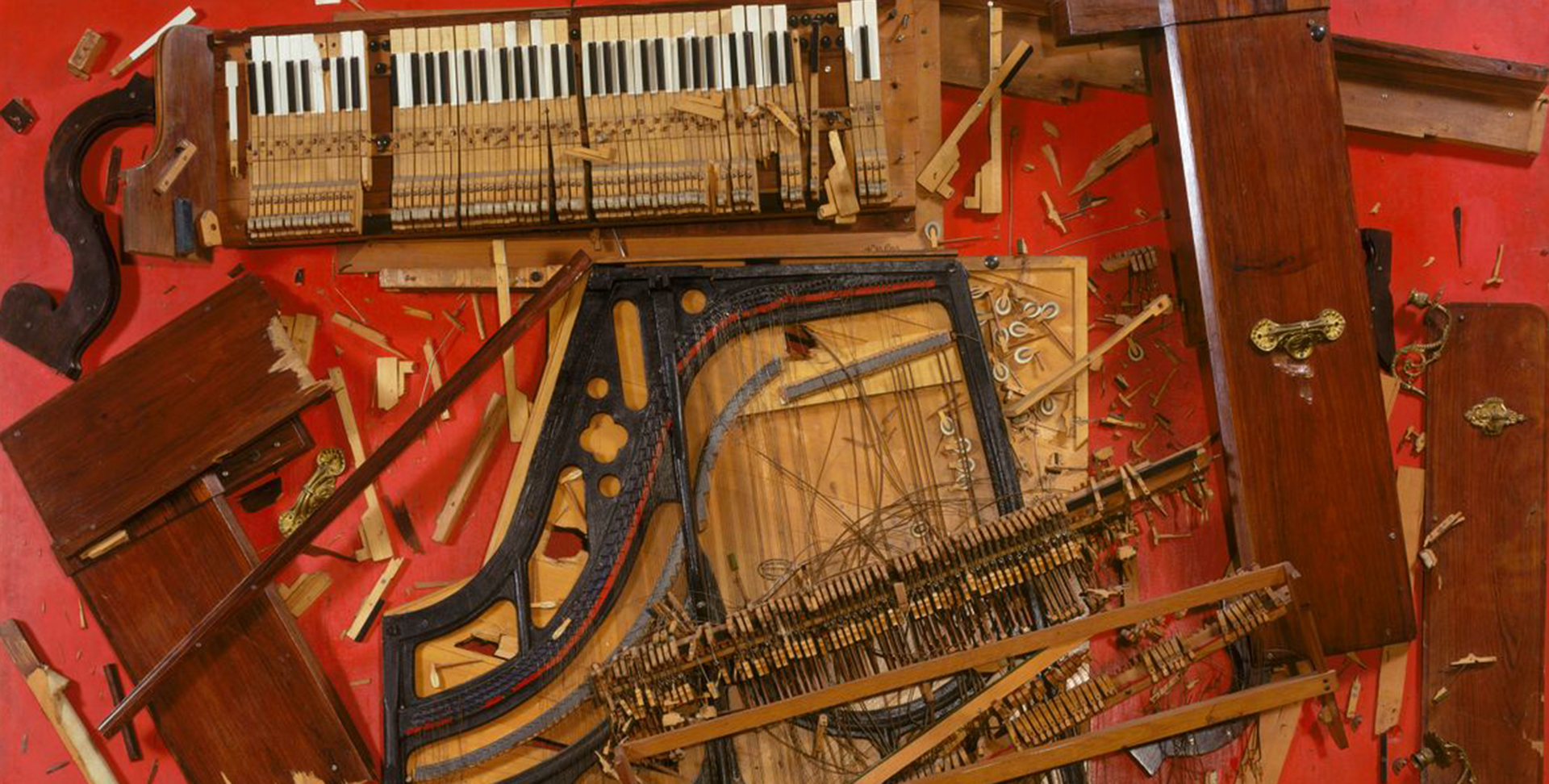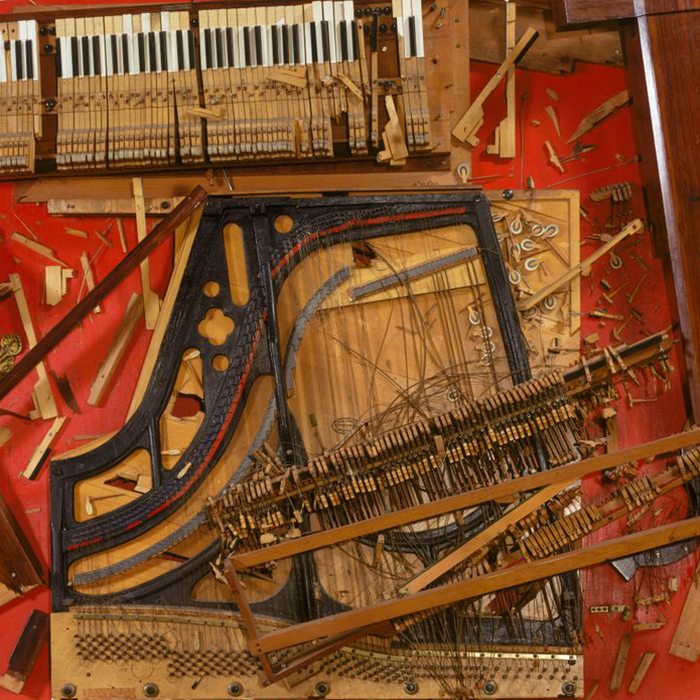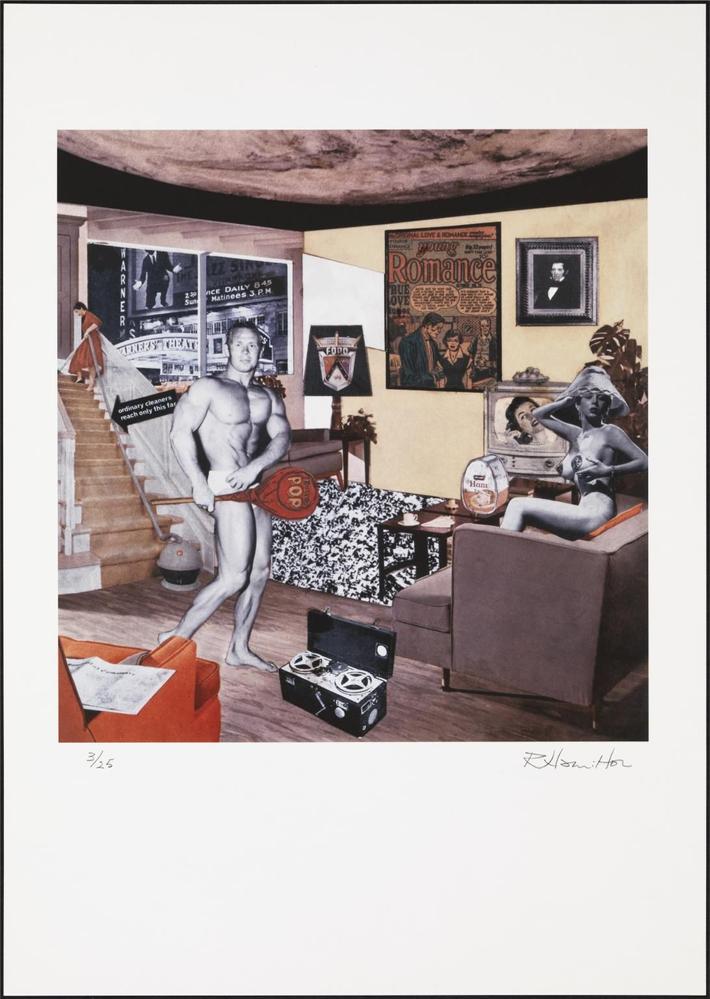


The New Realism was founded in October 1960, driven by Pierre Restany.
The word “realism” comes from the 19th century literary movement which sought to show the hum-drum reality of daily life. As for the word “new”, it was very fashionable in France at the time! Literature already had its New Novel, and the film industry its New Wave, so the time had come to find something new for the visual arts!
Arman is one of the movement’s iconic figures. The reuse of objects was at the heart of his creations.

Arman, who worked with re-used objects, was a figure of New Realism, a French movement created in 1960.

Arman had the idea of his “Le Plein” (Full Up) exhibition because his friend Yves Klein had held an exhibition christened “Le Vide”(Empty) two years before, in the same gallery, in which he presented nothing at all.
At the opening of the exhibition, a blue cocktail was served for the visitors. A few hours later, everyone was surprised to discover that their urine was blue. A playful way to absorb the colour!
From 1956, the colour blue was Klein’s trademark*. He even patented the chemical formula of a mixture of blue pigments and binding agents that he called IKB (International Klein Blue). As Klein never did things by halves, he painted 200 monochromes in IKB in 7 years.
Were these monochromes? Yes. Completely blue canvases.


Yves Klein created the formula for a blue colour that became the trademark of his works.
While New Realism was developing in France, a similar artistic movement was spreading in the United States: Pop Art.
Pop means “popular” because the artists in this movement used images from television, films, advertising or comic strips to create their works.
Pop Art was, in fact the consumer society’s artistic movement. Like New Realists, its artists gave objects from daily life the status of works of art.

American Pop Art drew on the consumer society, making everyday images into works of art.


The highly mediatized Andy Warhol, who was famous for his series of coloured images, blurred the boundaries between art and consumerism.

In order to reach his objective, Warhol adopted a printing technique used by the press: silkscreen printing. This enabled him to create canvases quickly, and therefore in large numbers.
This tomato soup carton, copied on a massive scale, is even closer to its model: mass-produced soup from the factory.
How did Warhol obtain all these copies, practically speaking?
The recipe for good silkscreen printing:

To produce his mass series of images, Warhol used a very quick printing technique: silkscreen printing.

Before American Pop Art invaded the whole world, the movement was born in England in the middle of the 1950s, based on advertising and magazines.
This is how one of the main artists defined the movement in 1957:
“Pop Art is: Popular (for the masses), Transient (short term), Expendable (easy to forget), low cost, mass produced, young (aims to reach youth), witty, sexy, gimmicky, glamourous and Big Business. “

Pop Art and its principles, such as mass production, were invented in England during the 1950s.
Pop Art has a ready-made successor today: Jeff Koons.
Like Warhol before him, he uses the commonest objects from our consumer society, from the most popular stars or the most well-known images to make into works of art in flashy colours.
Like Warhol, Koons is himself both a star and a sellable brand. This status has nothing to do with chance: the artist has sought it in various ways, such as bringing to front of stage his sexual relationship with the Italian pornographic actress la Cicciolina, through a series of works.
He regularly makes record sales. In 2019, his rabbit sculpture was sold for 91.1 million dollars, making it the most expensive work of a living artist.

Jeff Koons, who is both a provocative businessman and an author of very flashy works of art, is the heir of Pop Art.

"*" indicates required fields